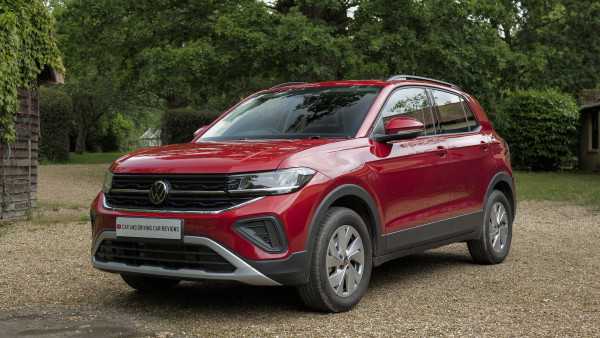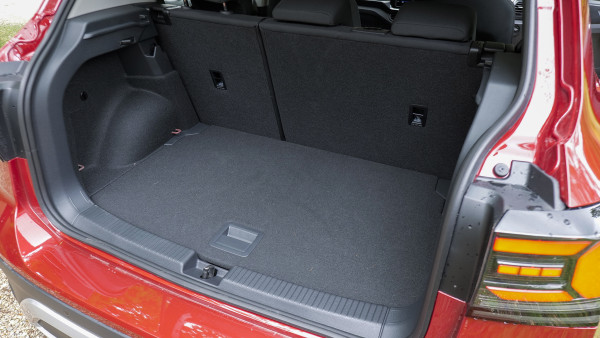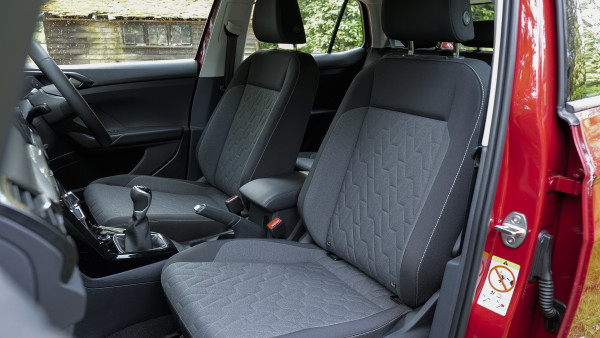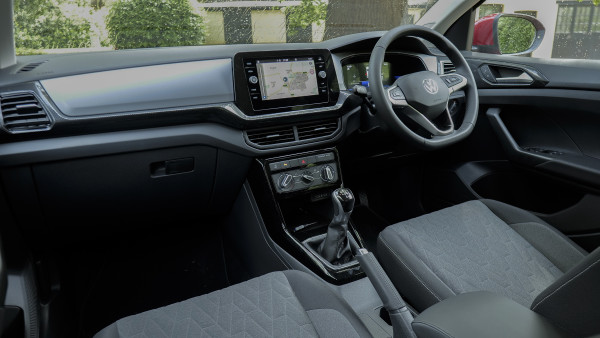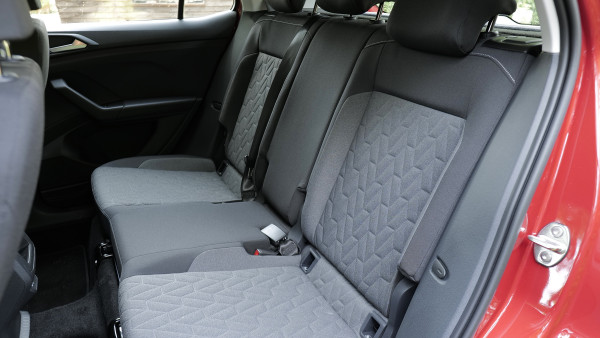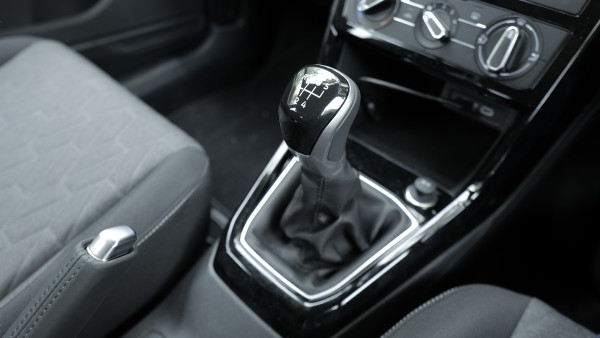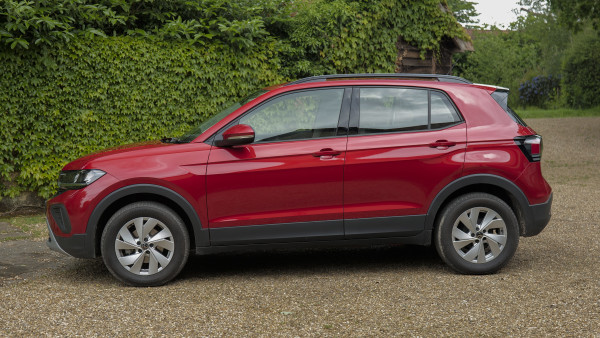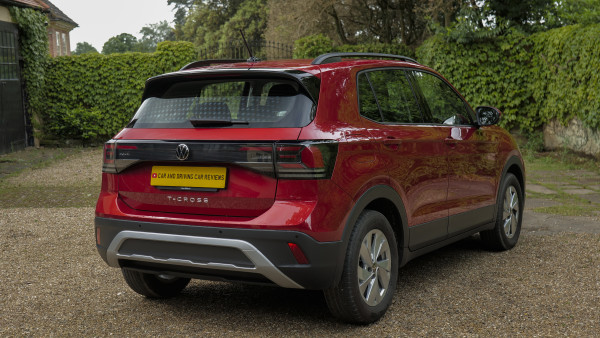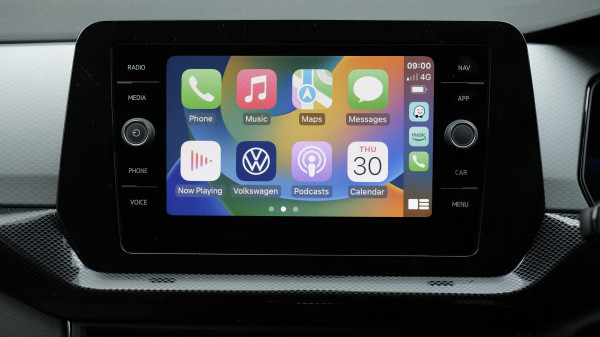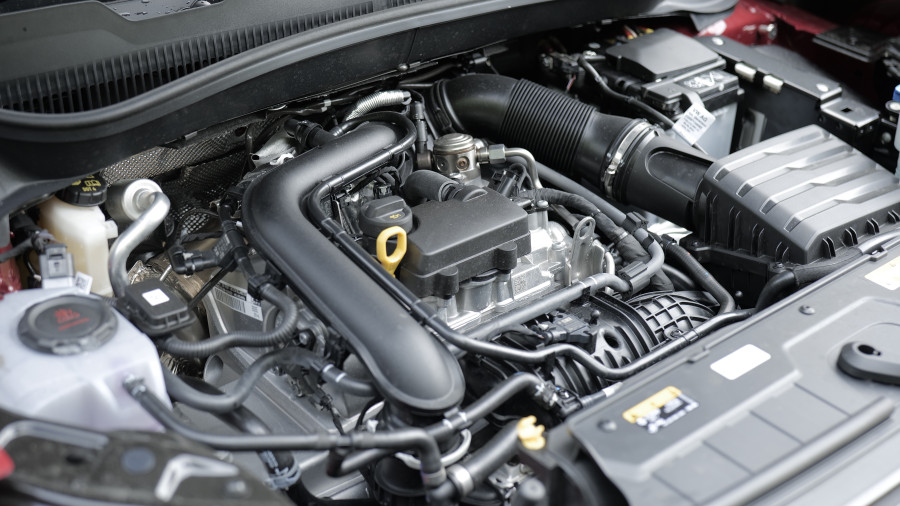Volkswagen's considered entry into the supermini-based SUV sector, the T-Cross, should find a ready market in this updated form. Jonathan Crouch drives it.
Ten Second Review
Think of a Volkswagen Polo with a more adventurous image, a slightly larger cabin and a more flexible interior. You're picturing this car, Volkswagen's smallest SUV, the T-Cross, here usefully improved with a sharper look and an updated cabin. As before, it's trendy, quite sophisticated and very acceptably efficient, thanks to its 1.0-litre TSI petrol and 1.5 TSI petrol engine options. And you can make it very much your own. What's not to like?
Background
It may seem as if Volkswagen has a considerable number of family SUVs in its model line-up but the surprising truth is that until the original introduction of this T-Cross model, the Wolfsburg brand had been completely absent from one of this crucial segment's fastest-growing sectors; that for supermini-based SUVs.
Nissan launched the Juke in 2011. Renault announced the Captur in 2014. It wasn't though until late 2018 that we first saw this T-Cross. Today, it slots into the Volkswagen SUV range just below the Taigo and the Golf-based T-Roc. Which in turn sit below the Tiguan and Touareg SUVs in the company's line-up. The T-Cross is Polo-based and sits on the same MQB-A0 platform as its VW Group cousins, the Skoda Kamiq and the SEAT Arona. Over 1.2 million T-Cross models had been sold before the introduction of this updated model in mid-2023.
Driving Experience
Not much has changed beneath the bonnet, so as before, there are three T-Cross engine options. Most buyers will want Volkswagen's 1.0-litre TSI petrol engine. Entry-level variants get it in 95PS form with a 5-speed gearbox but further up the range, the variants available feature this unit in a 115PS state of tune. Go for that and you'll be offered the option of a 7-speed DSG auto gearbox. Both engines have impressive torque available from low revs - the 95PS version delivering 175Nm from just 2,000rpm and the 115PS version serving up its 200Nm across the same 2,000rpm to 3,500rpm band. In other words, you won't have to row this little VW along with the gear lever through town.
T-Cross models equipped with the 95PS engine reach 62mph in 11.5 seconds, with a top speed of 112mph where legal, while the punchier 115PS versions top out at 120mph, reaching 62mph in 10.2 seconds. We said there were three engine options. The minority-interest third choice is a 1.5-litre TSI Evo petrol unit with 150PS. It develops 250Nm of pulling power, as much as the old 1.6-litre TDI diesel unit. All T-Cross models are front-driven: there's not much appetite in this segment for 4WD. In any case, the Polo platform doesn't allow for it. Don't expect a T-Cross to ride quite as well as a Polo - that taller, heavier body has to tell somewhere - but for the school run and commuting duties, few buyers are likely to have issues.
Design and Build
The T-Cross looks a lot smarter in this updated form, gaining an LED light bar within a restyled front grille. At the back, where the bumper's been redesigned and there's a silver-coloured kick plate, there are restyled tail lamps, which gain signature 'X-shape' graphics with top 'Style' and 'R-Line' trim levels. As before, the T-Cross is actually very similar in size to its T-Roc showroom stablemate, despite the fact that it sits on an MQB-A0 platform supposedly designated for cars a class smaller. It's a couple of inches longer and just under six inches taller than the Polo supermini it's based upon but that still leaves it a touch tinier than most key rivals in the segment for small SUVs.
That doesn't stop it from being plenty spacious enough for a small family inside though. As before, the elevated hip point makes this T-Cross feel bigger than a supermini. For this facelifted model, Volkswagen has redesigned the dashboard and introduced softer-touch materials. The brand has also added a digital instrument cluster; base variants get an 8-inch instrument screen, upgraded to 10-inches in size on 'Style' and 'R-Line' versions as part of the brand's latest 'Digital Cockpit' set-up. The central infotainment screen has been updated too - with new MIB software; it's 8-inches in size with base 'Life' models and 9.2-inches with plusher 'Style' and 'R-Line' variants. If the optional Climamatic air conditioning system has been fitted, it'll come with digital displays, plus the brand's controversial touch and slider controls; try before you buy.
As before, there's second row space big enough for a couple of six foot adults to sit comfortably, particularly if they shift the standard sliding rear bench all the way back. Doing that reduces boot space from 455 to 385-litres (still 10% more than a Polo). An adjustable-height boot floor makes the cargo space accessible for a variety of loads too.
Market and Model
As before, the T-Cross sells in the £24,000 to £32,000 bracket, which is fractionally above what you'll pay for volume rivals like Renault's Captur, Nissan's Juke or, indeed, this model's two VW Group cousins, the Skoda Kamiq and the SEAT Arona. T-Cross buyers are offered a choice of four trim levels - 'Life', 'Match', 'Style' and 'R-Line'. Providing you avoid base trim and the base 95PS engine, you'll be offered the chance to pay £1,600 more for a 7-speed DSG auto gearbox.
All T-Cross variants benefit from a sliding rear bench seat as standard. And the base 'Life' derivatives get 16-inch alloy wheels, chrome-trimmed bumpers and rear parking sensors. Plus a leather-trimmed multifunction steering wheel and a variable boot floor. Tech highlights include adaptive cruise control, app connect and a driver alert system. We could write for the rest of the page about the opportunities for model personalisation; suffice it to say that there are plenty. Three fresh colours have been added to the model range: the solid colour Rubber Ducky Yellow (a crisp, sporty yellow), Clear Blue Metallic (a light blue) and Kings Red Metallic (a vivid, striking red).
The brand's 'IQ.LIGHT LED matrix' headlights are now optionally available; the tow bar fitting has been upgraded so it could take a carrier for an e-bike; and there's also now the standard inclusion of the brand's 'Travel Assist' system for greater longitudinal and lateral vehicle control. Depending on the traffic ahead and the permitted speed, so-equipped, the T-Cross can control speed with automatic acceleration and braking. Within the system limits, 'Travel Assist' can also include speed limits, bends, and roundabouts in its control interventions. At the same time, Lane Assist can help to keep the vehicle in its lane.
Cost of Ownership
Small SUVs have come quite a long way in recent times, most notably in terms of running cost efficiency. Not long ago, there was quite a significant gap between the fuel and CO2 readings of a little SUV and the supermini it would inevitably be based upon. This was mainly down to excess weight, the kind of thing you still find with older designs in this segment. But not here. In the typical 1.0-litre TSI 95PS manual form we tried, this car has a kerb weight of 1,254kgs, just 85kgs more than the mechanically-identical version of the Polo it's based upon, which is about as slim an increment as you're likely to see in this segment.
That explains why the WLTP-rated returns of the volume base T-Cross variant - 128g/km of CO2 and up to 49.8mpg on the combined cycle - aren't really that far off those of a comparable Polo (which, mainly due to better aerodynamics, manages 118g/km and 54.4mpg). The 95PS T-Cross model's figures are actually slightly bettered if you opt for the 115PS version of the 1.0-litre TSI engine - 127g/km and up to 50.5mpg in 6-speed manual form; it's 132g/km and 48.9mpg if you get the 115PS model with a DSG auto. Or 135g/km and 47.4mpg if you go for the minority-interest four cylinder 1.5 TSI 150PS auto version.
Summary
It's surprising that Volkswagen took so long to enter the supermini-sized part of the SUV segment. There's no doubt though that the brand has taken careful note of what buyers want in this class and provided a product that seems to meet what the market's currently looking for, especially in this updated form. You'll pay a little more for a T-Cross than you will for its most obvious rivals, but what you get in return is a car with a little more polish than obvious competitors.
The sliding rear bench will continue to be a key showroom selling point and buyers will be pleased to find plenty of opportunities for personalisation. You could downsize from a Golf into one of these and feel quite happy - and we think plenty of customers will. How appealing the T-Cross will be to drivers currently loyal to rival brands is another question. There's no doubt though, that it's likely to continue to carve out a useful niche for itself.
